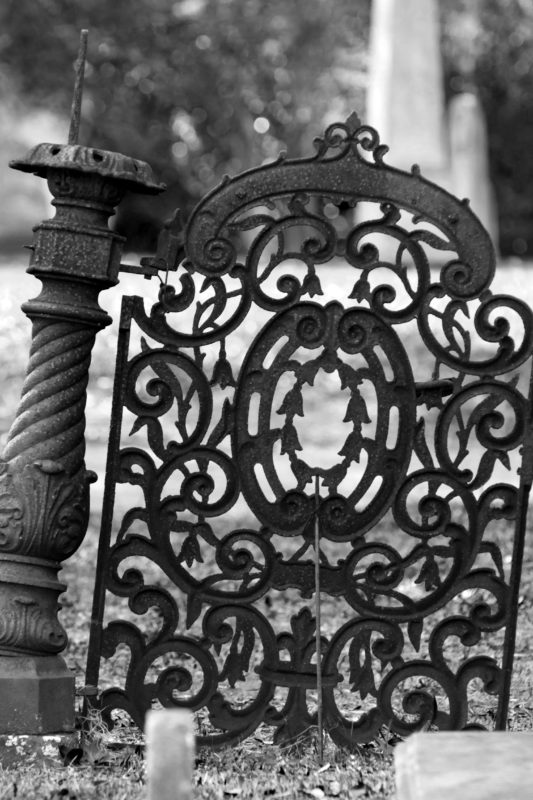
I don’t even know what some of the words mean: “The early metalworker was familiar, for example, with hammering, embossing, chasing, inlaying, gilding, wiredrawing, and the application of chemicals.” But I do know that I like the finished products of all this activity, particularly when it is made out of wrought iron.

In fact I find myself chasing it with the camera wherever I can – although that is different from the one cited above…: “Chasing is accomplished with hammer and punches on the face of the metal. These punches are so shaped that they are capable of producing any effect—either in intaglio (incising beneath the surface of the metal) or in relief—that the metalworker may require. The design is traced on the surface, and the relief may be obtained by beating down the adjacent areas to form the background.”

I learned this and more from an overview in the Encyclopedia Brittanica:
Ironwork is fashioned either by forging or casting. Wrought iron is the type of ironwork that is forged on an anvil. There are no fabrication similarities to cast iron, which is poured in a molten state into prepared sand molds.
Wrought iron is fibrous in structure and light gray in colour. It can be hammered, twisted, or stretched when hot or cold. The more it is hammered, the more brittle and hard it becomes; but it can be brought back to its original state by annealing (heating and then cooling slowly). It will not shatter when dropped.
The individual components of a wrought-iron design are often plain or twisted rods, with or without chisel-mark incisions. They are frequently composed as a series of straight, parallel members or in combination with scrolls, or as a repeat design of some geometric shape such as the quatrefoil. Where two curved members are tangent, they are characteristically secured together by bands or collars, rather than by welding. Where two straight bars intersect, it is accredited craftsmanship to make the vertical bar pierce or thread the horizontal member. Grilles consisting of two series of parallel small-diameter rods, one series at right angles to the other, were sometimes interlaced or woven.
For details and history you can read this:https://www.britannica.com/topic/metalwork#ref600786
or a short version, if you don’t want to have your nose in the book until 2019)
In Europe wrought iron was used in decoration of churches since the middle ages; later, Victorian houses displayed a lacework of wrought iron grids and garlands ending in scrolls, leaf-ends or fishtails, offering a paradox of solidity and daintiness. It was meant to send out a message of a significant social power – confident in its stronghold, parading expensive artwork with a view of its property behind.






In the US, New Orleans reigns supreme when it comes to the art form, but frequent fences can be seen in Charleston as well.




I like the art deco (Jugendstil) works I photographed in Paris and Bremen, which are more elegant, less ostentatious.



In any case, I imagine what it meant to be a blacksmith working with all this, inventing patterns, methods to make it more pliable, designing forms, if it was to be combined with casting, and then erecting those balconies at houses that he could probably not afford in a life time….







Sara Lee
Some beautiful stuff! Thank you!
Nicky Larson
Simply stunning!
Alice Meyer
Thought you might like to know about Bill Hawkins who is a local architect, historian, author and expert specifically on Portland cast-iron. He is to be found on several sites (i.e. Bill Hawkins and Cast Iron in Portland) including the one below.
“Portland is home to the second largest collection of cast-iron architecture in the United States, just behind New York City’s historic Soho District. Cast-iron-fronted buildings were constructed in Portland between the …. Online exhibit. http://cipdx. visitahc.org/. Hawkins, William J. III. The Grand Era of Cast-Iron …